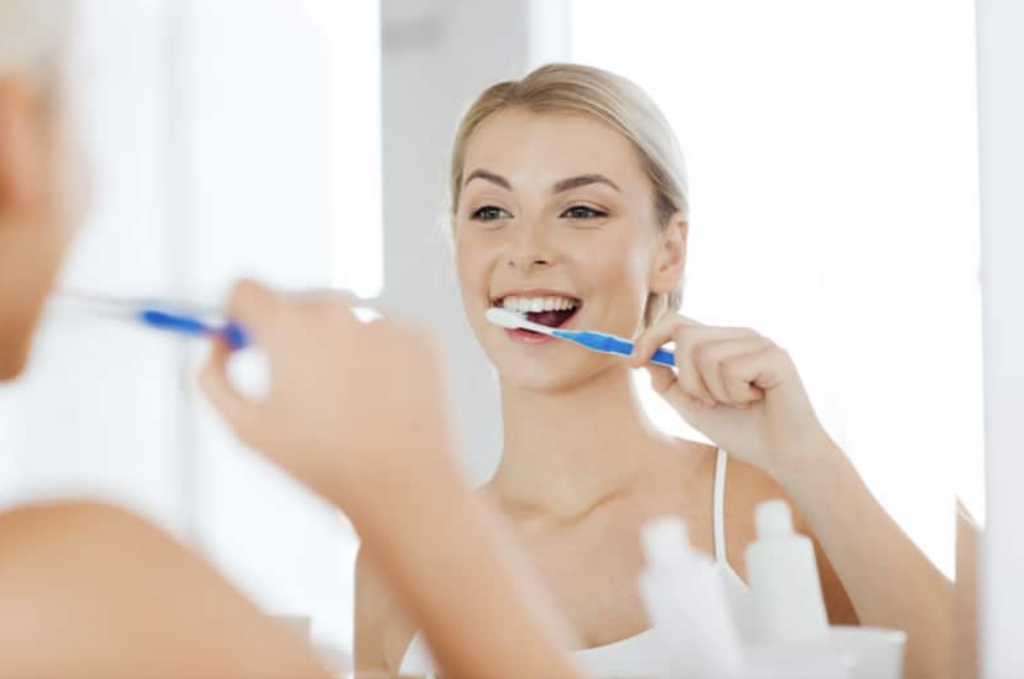What is a dental cleaning?
A dental cleaning is a professional cleaning you receive from a dentist or dental hygienist.
A routine dental cleaning should include scaling, root planning, and polishing
Most dental cleanings take only between 25 and 35 minutes.
Cleanings should be performed every six months to prevent excessive plaque buildup.

Dental Cleaning
Dental cleaning is a three-stage process of scaling, root planning, and polishing.
Stage 1
Scaling
This is the process of removing plaque and tartar from all tooth surfaces in a variety of methods, depending on the amount of plaque and tartar. A dental cleaning is a professional cleaning you receive from a dentist or dental hygienist. Most dental cleanings take only between 25 and 30 minutes. Cleanings should be performed every six months to prevent excessive plaque buildup. Plaque left untreated can lead to unhealthy gums and tooth decay. A routine dental cleaning should include scaling, root planing, and polishing.
Root Planing
This is the process of cleaning pockets in the gums to treat and prevent gum problems. Root planing involves inserting a pointed dental tool called scalers into the gum pockets to clean plaque buildup. Depending on the degree of difficulty, root planing may take several appointments and local anesthesia may be used to prevent pain.
Stage 2
Stage 3
Polishing
This is the last step in tooth cleaning and involves finishing the surface of the teeth to make them shiny and clean.
There are two kinds of polishing: air polishing and rubber tip polishing.
Air Polishing
Air polishing works by spraying high pressured water mixed with baking soda paste onto the surface of your teeth. This powered water washes away residue and plaque while baking soda removes stains.
Rubber Tip Polishing
Rubber cup polishing uses a low-speed and gentle handpiece that contains a polishing paste made of abrasive ingredients ideal for removing stains.
Maintaining Good Oral Hygiene
Maintaining good oral hygiene is on eof the most important things you can do for your teeth and gums. Healthy teeth not only enable you to look and feel good, but they also make it possible to hear and speak properly. Good oral health is important to your overall well-being. Daily preventative care, including proper brushing and flossing will help prevent problems before they develop.

How to Properly Brush and Floss Your Teeth
Flossing
Flossing is an important oral hygiene habit that cleans and dislodges food stuck between your teeth, which reduces the amount of bacteria and plaque in your mouth.
Did you know that if you don’t floss, you miss cleaning 40% of tooth surfaces?
How to Properly Floss
Step 1
Break off about 18-24 inches of dental floss and wrap it around both middle fingers with 1-2 inches left between.
Step 2
Hold the floss taut with your thumbs and index fingers.
Step 3
Place the dental floss between 2 teeth, gently guide the floss up and down both sides of each tooth.
Step 4
As the floss reaches your gums, curve the floss at the base of your tooth to form a C shape.
Step 5
REPEAT FOR ALL YOUR OTHER TEETH
Brushing
Brushing your teeth helps remove plaque and bacteria that continually form on teeth and around the gumline. When not removed regularly, plaque can lead to cavities, tooth decay, and even periodontal disease. A proper brushing technique can protect teeth from decay and disease.
From breaking down food to toothy greeting smiles, your pearly whites play a vital role in daily life.

How to Properly Brush
Step 1
Start with the outer surfaces of your teeth. Gently brush upper and then lower teeth.
Step 2
Tilt your brush at a 45° angle. Brush against the gumline to get rid of any trapped plaque or food debris. Gently move the brush back and forth using short tooth-wide strokes.
Step 3
Brush the inner surface of your teeth. Use a 45° angle to brush back and forth to clean the inside surfaces of the teeth.
Step 4
Clean the chewing surfaces of your teeth. Don’t forget to use short back and forth strokes to brush the tops of your back teeth where food can easily get trapped.
Step 5
Brush your tongue.
